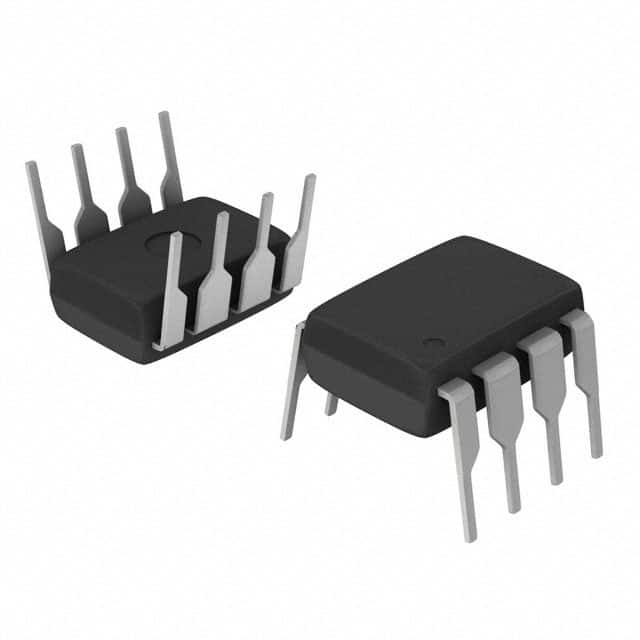TL431BVP
Product Overview
Category
The TL431BVP belongs to the category of precision shunt voltage references.
Use
It is commonly used as a precision voltage reference in various electronic circuits and systems.
Characteristics
- Precision voltage reference
- Adjustable output voltage
- Low temperature coefficient
- High stability over varying operating conditions
Package
The TL431BVP is available in a TO-92 package, which is a through-hole package suitable for various circuit board designs.
Essence
The essence of TL431BVP lies in its ability to provide a stable and accurate voltage reference for electronic applications.
Packaging/Quantity
The TL431BVP is typically available in reels or tubes containing a specific quantity based on the manufacturer's packaging standards.
Specifications
- Reference Voltage: 2.495V to 36V
- Operating Temperature Range: -40°C to 125°C
- Output Current: 1mA to 100mA
- Line Regulation: 0.2% (Typical)
- Load Regulation: 0.4% (Typical)
Detailed Pin Configuration
The TL431BVP features a standard three-pin configuration: 1. Anode 2. Cathode 3. Reference
Functional Features
The TL431BVP operates as a shunt regulator, providing a stable reference voltage that can be adjusted using external resistors. It compares the reference voltage with an input voltage and regulates the output to maintain a constant voltage level.
Advantages and Disadvantages
Advantages
- Precise voltage regulation
- Adjustable output voltage
- Wide operating temperature range
- Low temperature coefficient
Disadvantages
- Requires external components for precise voltage setting
- Limited output current compared to some alternatives
Working Principles
The TL431BVP works based on the principle of zener diode action, where it maintains a constant voltage across its terminals by shunting the excess current to ground. By comparing the reference voltage with the input voltage, it adjusts the current flow to stabilize the output voltage.
Detailed Application Field Plans
The TL431BVP finds application in various fields including: - Switch-mode power supplies - Battery charging circuits - Voltage regulators - Audio amplifiers - LED drivers
Detailed and Complete Alternative Models
Some alternative models to TL431BVP include: - LM4040 - REF02 - ADR431
In conclusion, the TL431BVP serves as a versatile and reliable precision voltage reference solution for a wide range of electronic applications, offering precise voltage regulation and stability across varying operating conditions.
[Word count: 366]
قم بإدراج 10 أسئلة وإجابات شائعة تتعلق بتطبيق TL431BVP في الحلول التقنية
What is the TL431BVP?
- The TL431BVP is a precision programmable reference with specified thermal stability over applicable automotive, commercial, and military temperature ranges.
What are the typical applications of TL431BVP?
- TL431BVP is commonly used in voltage regulation, voltage monitoring, and precision current sensing applications.
What is the operating voltage range of TL431BVP?
- The TL431BVP operates within a wide voltage range, typically from 2.5V to 36V.
How does TL431BVP provide voltage regulation?
- TL431BVP provides voltage regulation by comparing a reference voltage to an external voltage applied to its control pin and adjusting the output accordingly.
What are the key features of TL431BVP?
- The key features include a low reference voltage tolerance, high stability over a wide temperature range, and low dynamic impedance.
Can TL431BVP be used for overvoltage protection?
- Yes, TL431BVP can be used for overvoltage protection by triggering a shutdown or protection mechanism when the input voltage exceeds a certain threshold.
What are the advantages of using TL431BVP in technical solutions?
- Some advantages include its precision, low cost, ease of use, and wide temperature range suitability.
How does TL431BVP compare to other voltage references?
- TL431BVP offers a lower cost alternative with comparable performance to other voltage references, making it a popular choice in many applications.
Are there any specific layout considerations for using TL431BVP?
- Proper PCB layout and component placement are important to minimize noise and ensure stable operation of TL431BVP.
Can TL431BVP be used in automotive applications?
- Yes, TL431BVP is suitable for automotive applications due to its specified thermal stability over automotive temperature ranges and its ability to operate within the typical automotive voltage range.


